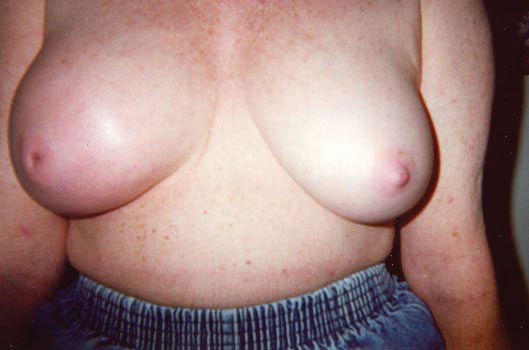MKSAP Quiz: Heaviness, swelling of breast
A 50-year-old woman is evaluated for heaviness and swelling of her right breast of 3 weeks' duration. One week ago, she noticed that her outer breast had a pink appearance. Medical history is otherwise unremarkable, and she takes no medications.

On physical examination, vital signs are normal. Breast findings are shown.
Breast examination reveals no masses or tenderness.
Results of the complete blood count with differential are normal.
Which of the following is the most likely diagnosis?
A. Breast abscess
B. Ductal ectasia
C. Inflammatory breast cancer
D. Mastitis
Answer and critique
The correct answer is C. Inflammatory breast cancer. This content is available to MKSAP 19 subscribers as Question 40 in the Oncology section.
This patient most likely has inflammatory breast cancer (IBC) (Option C). IBC is suspected on the basis of clinical findings including erythema, peau d’orange, and skin thickening. Patients often present with breast enlargement or swelling developed during a few weeks or months, and younger, lactating women may have been treated for presumed mastitis with antibiotics. It is important to consider that IBC may be the underlying cause in lactating women who do not respond to antibiotics for an apparent mastitis. A palpable breast mass may be present. The skin changes are due to the obstruction of dermal lymphatic vessels by cancer cells. The initial diagnostic test is mammography followed by core biopsy of any suspicious lesion. The finding of dermal lymphatic invasion with a punch skin biopsy supports but is not necessary for the diagnosis of IBC. Patients with IBC have a higher risk of distant recurrence and also a higher risk of locoregional recurrence and should be treated with aggressive local and systemic therapy. All patients with IBC should receive preoperative chemotherapy to optimize the likelihood of obtaining negative surgical margins. Patients with IBC often have a greater extent of disease in the breast, and all should undergo mastectomy and postmastectomy irradiation to minimize the risk of locoregional recurrence.
Mammary ductal ectasia (Option B) is an inflammatory breast condition most prevalent in middle-aged women. The genesis of the findings is related to collection of debris in mammary ducts resulting in ductal inflammation. It may be associated with nipple discharge. On occasion, the distended mammary duct can be visualized as a blue mass under the nipple. The blocked ducts may become infected resulting in breast abscess or mastitis. The condition often resolves spontaneously. Mammary ductal ectasia usually results in localized inflammatory changes, not the diffuse changes as noted in this patient.
Infections of the breast, specifically mastitis and breast abscess (Options A, D), most commonly occur in lactating women and would be unusual in a 50-year-old woman. Infectious mastitis can have a similar clinical and mammographic appearance to IBC. However, infectious mastitis and breast abscesses are typically associated with breast tenderness, fever, and leukocytosis, whereas IBC—despite its name—is not a true inflammatory process and is not associated with these findings.
Key Points
- Inflammatory breast cancer is suspected on the basis of clinical findings including erythema, peau d’orange, and skin thickening.
- Diagnostic modalities for suspected inflammatory breast cancer include mammography, core biopsy, and skin biopsy.




